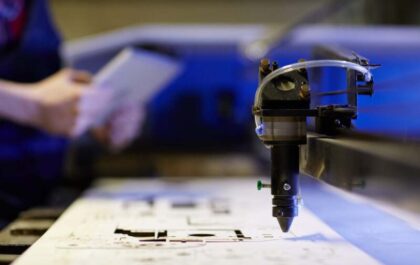Table of Contents
Introduction
Computer Vision is one of the turfs of computer science aimed at building intelligent applications capable of understanding the content of images as understood by man. Ideas can take several forms, such as successive images (video) and scenes from several cameras.
And data from several dimensions were taken from a medical imaging device. So computer vision studies and describes artificial vision systems implemented in programs or machines, and computer vision is one of the branches of fake intelligence science that aims to Simulate intelligent human capabilities.
The credit of objects is one of the essential tasks within the concept of computer vision, which depends on identifying and defining these things, whether these objects are in photos or videos.
In this article, different computer vision applications will be presented with explanations of how each is processed using machine learning.
Image Classification
Image classification is the first computer vision technology to be handled by machine learning. However, although machine learning algorithms were effective in dealing with structured data problems, they only worked well in simple tasks such as classifying different geometric shapes. Several years later, an
Support Vector Machine was introduced, which could process high-dimensional data with minimal samples, such as small image datasets. Finally, what revolutionized computer vision was the introduction of Convolutional Neural Networks by Yann Lecun in his LeNet model. Which proved superior to other vision-based machine learning techniques in 2012.
Dataset
Machine Learning Model Training requires accurately described image and video data to understand the visual world. So we need a dataset to train and test the model to give high-resolution results.
Datasets for identifying and discovering objects require more work than work in creating a dataset to classify images. In datasets dedicated to identifying and finding things. An annotation is placed, showing the object’s name and the precision coefficient’s value on the bounding box around each target object in a particular image.
Object Localization and Detection by Computer Vision
It is a computer vision method that allows us to determine the type and location of objects in an image or video. Thus, this technique enables us to know the number of things and resolve each of the elements discovered within a frame in addition to locating this element.
So this technique is more complex than classifying images, as there are often multiple objects of different types in the picture. Nevertheless, this technology is heavily used in various applications such as self-driving cars, robotics, augmented reality and medical applications.
- Many algorithms for locating and detecting an object, such as the R-CNN Regional Neural Folding
- Network, the Fast R-CNN Regional Neural Folding Network, the Faster R-CNN Regional Neural
- Folding Network, and the YOLO Network. It is an abbreviation for You Only Look Once and others.
Image Segmentation by Computer Vision
One computer vision technique has a role in editing images and separating objects from them, where the digital image is cut into parts of pictures of smaller size. Usually, the fragmentation of images is either based on the colour information in the photo.
It determines the number of objects depending on the colour differences or the edge information. It helps decide the edges of the object’s perimeter.
Some of the Datasets Used to Hash the Image
COCO and PASCAL datasets are among the essential datasets used to fragment images. Also, other datasets are designed for more specific applications. Such as medical applications, where many datasets, including BraTS and Lits. Target tasks such as fragmentation of the tumour into different body parts and other types of diseases.
Image Style Transfer by Computer Vision
It is a computer vision technique that allows us to perform specific effects on an image by another image that carries a particular style while preserving the features of the original image. Therefore, if we have one image (input image) and another (pattern image). Then the output image is the content of the input image but with a new style and this pattern may be a distinctive logo, colours, or a specific model.
Or a particular style or a famous painting was drawn by a renowned artist. Where the touches of that artist move to a picture or image. And thus we get a new work of art with beautiful touches.
Related posts
Featured Posts
Exploring Advanced Techniques in the Laser Engraving Machine: 3D, Texturing, and Multi-Layered Designs
Many industries have spoken for the laser engraving machine because of its results and versatility. But recently, many advancements have…
Benefits of Vitamin D
Introduction One cannot live without the benefits of vitamin D because its virtues are essential for good health. But do…


